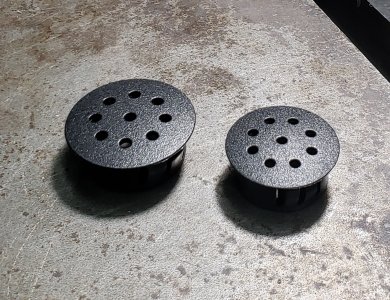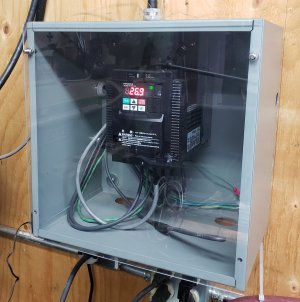@Susquatch - I believe I found an answer for the intermediate voltage:
“The intermediate circuit smoothes the DC voltage and compensates for load surges, such as during start-up or during sudden load changes, and acts as a buffer circuit for the energy the VFD supplies the motor. Modern drives use a DC voltage of constant amplitude. For energy storage, they typically use electrolytic capacitors that also smooth the pulsating DC voltage.
In practice, under no-load conditions, the VFD DC link voltage is typically about √2 x mains voltage. The DC link voltage drops under load but in motor regenerative operation, such as during fast deceleration of high-inertia loads, the motor feeds energy back into the intermediate circuit and the DC link voltage increases. If the voltage attempts to exceed the intermediate critical value, the VFD will either back off the deceleration ramp, or cut the supply to the motor to prevent damage.
In contrast to a purely resistive load, the capacitive smoothing of the DC link results in a non-sinusoidal voltage. This creates network effects or harmonics. In a three-phase supply, these harmonics range in frequency up to about 2 kHz. As a countermeasure, inductive chokes are fitted in series in the intermediate circuit to limit these harmonics. Another advantage of chokes in the DC link is that they smooth the charging of the capacitor and thereby extend its life.
To minimize system disturbance, some manufacturers reduce the capacitance of the intermediate circuit, or even eliminate the DC link capacitors entirely. This does not completely eliminate the line-side disturbances, but moves them to other frequency ranges (up to 10 kHz). This, however, causes problems through the reduced or lack of smoothing of the DC link voltage. Thus, only a reduced motor voltage is available at the drive output, resulting in higher currents for full-load motor operation at the same duty point, with increased motor heating.
Built-in chokes reduce the line harmonic distortion and protect the dc link capacitors.”
That is quoted from a article on the web. It still does not specify anything about settings for a typical motor - basically that the intermediate voltage setting will not be exceeded for the protection of the motor during sudden load changes- like stopping. The Intermediate frequency setting is to keep the v/f ratio correct during the changes of load.
Essentially your average Joe hooking one of these VFD’s up will be lost in the math. I am not sure how many of us would even require the speed programming for different operations that the units can do either? Anyway, mine is left at default 110/30 (I adjusted the 25 to 30 as we are running a 60 Hz motor. Things run well.



